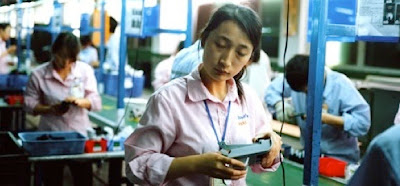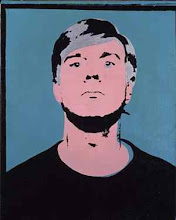 |
|
Allan Sekula and Noël Burch, still from
The Forgotten Space, 2010
|
Photographer and filmmaker, Allan Sekula practiced a form of critical realism. His work was marked by a consistent preoccupation with politics and economics and a firm commitment to a practice with a socially critical purpose: he saw photography as having a “special aptitude for depicting economic life, for what used to be called ‘documentary’, and for an affinity between documentary and democracy.”
He cared nothing for the debates about photography’s status as art but was clear sighted about the ‘art world’ which he described as:
“a small sector of culture in general, but an important one. It is, among other things, the illuminated luxury-goods tip of the commodity iceberg. The art world is the most complicit fabrication workshop for the compensatory dreams of financial elites who have nothing else to dream about but a ‘subjectivity' they have successfully killed within themselves."Significant works include Untitled Slide Sequence (1972), Fish Story (1988-94) and (with Noël Burch) The Forgotten Space (2010).
 |
| Allan Sekula, Untitled Slide Sequence, 1972 |
The container box
is the unlikely focus of Fish
Story (1988-94) as well as the film, developed out of that project, The Forgotten Space (2010).
 |
|
Allan Sekula, "Doomed
Fishing Village of Ilsan, September 1993", from Fish
Story 1989–95
|
 |
|
Allan Sekula, "Welder’s Booth in Bankrupt Todd Shipyard, Two Years After Closing, Los
Angeles Harbor, San Pedro, California. July 1991", from Fish
Story, 1989–95
|
 |
|
Allan Sekula, “’Pancake’,
a former shipyard sandblaster, scavenging copper from a waterfront scrapyard,
Los Angeles harbour, Terminal Island, California” from Fish Story, 1989–95
|
The Forgotten Space
(2010) "showcases the maritime world as
the ultimate ‘forgotten space’ of global capitalism".
 |
|
Allan Sekula and Noël Burch, stills from
The Forgotten Space, 2010
|
"As a writer, Allan described with great clarity and passion what photography can, and must do: document the facts of social relations while opening a more metaphoric space to allow viewers the idea that things could be different. And as a photographer he set out to do just that. He laid bare the ugliness of exploitation, but showed us the beauty of the ordinary; of ordinary, working people in ordinary, unremarkable places doing ordinary, everyday things. And, like the rigorous old-style leftist that he was, he infused that beauty with a deep sense of morality."See:
Jennifer Burris (2011) "Material Existence: Allan Sekula's Forgotten Space", Afterall
Edward Dimendberg (2005) "Allan Sekula", Bomb
Bill Roberts (2012) "Production in View: Allan Sekula's Fish Story and the Thawing of Postmodernism", Tate Papers, Issue 18
Sukhdev Sandhu (2012) "Allan Sekula: Filming the Forgotten Resistance at Sea", The Guardian






No comments:
Post a Comment